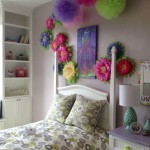How To Decorate Your Small Sitting Room
Decorating a small sitting room presents unique challenges. The objective is to maximize space, create an illusion of spaciousness, and establish a comfortable and inviting atmosphere. Strategic planning and thoughtful selection of furniture, colors, and accessories are essential to achieving a successful and stylish small sitting room.
Before embarking on the decorating process, it's crucial to assess the existing space. Measure the room's dimensions and identify its architectural features, such as windows, doors, and any built-in elements. Determine the primary function of the sitting room. Will it be used for relaxing, entertaining, working, or a combination of these activities? Understanding the room's purpose will guide the selection of furniture and layout.
Consider the natural light available in the room. Is it a bright and sunny space, or is it darker and more intimate? The amount of natural light will influence the choice of paint colors and lighting fixtures. Evaluate the existing flooring and walls. Are they in good condition, or do they require updates? Addressing these factors upfront will ensure a smoother and more successful decorating process.
Maximizing Space and Layout
Space is the most valuable commodity in a small sitting room, therefore maximizing the existing space is paramount. Begin by decluttering the room and removing any unnecessary items that take up space without adding value. A minimalist approach is generally beneficial in small spaces.
Furniture selection is critical. Opt for furniture pieces that are appropriately scaled to the room's dimensions. Avoid bulky or oversized furniture that will overwhelm the space. Choose furniture with clean lines and a low profile to create a sense of openness. Multifunctional furniture, such as a sofa bed or an ottoman with storage, can be particularly useful in small sitting rooms.
Consider a sectional sofa instead of a traditional sofa and loveseat combination. A sectional can provide ample seating while fitting snugly into a corner, maximizing the usable floor space. Alternatively, a small sofa paired with a couple of comfortable armchairs can create a more flexible seating arrangement.
Arranging the furniture strategically is also essential. Avoid pushing all the furniture against the walls, as this can make the room feel smaller. Instead, create a focal point in the room, such as a fireplace or a large window, and arrange the furniture around it. Allow for adequate walkways so people can move freely around the room.
Employ vertical space to maximize storage and display opportunities. Tall bookshelves or floating shelves can provide ample storage without taking up valuable floor space. Consider mounting the television on the wall to free up space on a console table. Mirrors can also be used to create the illusion of spaciousness. Place a large mirror on a wall to reflect light and make the room feel larger and brighter.
Use rugs to define different zones within the sitting room. A rug placed under the seating area can help to anchor the furniture and create a cohesive look. A runner rug can be used to define a walkway or to add visual interest to a narrow space. Choose rugs that are appropriately sized for the room; a rug that is too small will make the room feel smaller, while a rug that is too large will overwhelm the space.
Color Palette and Lighting
The color palette plays a significant role in creating the desired atmosphere in a small sitting room. Lighter colors tend to make a room feel larger and brighter, while darker colors can make it feel smaller and more intimate. Opt for a light and neutral color palette for the walls to maximize the perception of space.
White, off-white, cream, and light gray are excellent choices for walls in a small sitting room. These colors reflect light, making the room feel brighter and more open. Introduce pops of color through accessories, such as pillows, throws, artwork, and plants. A monochromatic color scheme, using different shades of the same color, can also create a sense of harmony and spaciousness.
Proper lighting is crucial in a small sitting room. A combination of natural and artificial light is ideal. Maximize natural light by keeping windows clean and unobstructed. Use sheer curtains or blinds to allow light to filter into the room while providing privacy. Supplement natural light with a variety of artificial light sources.
Overhead lighting, such as a ceiling light or recessed lighting, provides general illumination. Task lighting, such as a floor lamp or table lamp, provides focused light for reading or other activities. Accent lighting, such as wall sconces or picture lights, highlights architectural features or artwork. Dimmers can be used to control the intensity of the lighting and create different moods.
Choose lighting fixtures that are appropriately scaled to the room's dimensions. Avoid large or ornate chandeliers that will overwhelm the space. Opt for simple and elegant fixtures that provide ample light without taking up too much visual space. Consider using mirrors to reflect light and amplify the brightness of the room.
Use different types of lightbulbs to create the desired ambiance. Warm white lightbulbs create a cozy and inviting atmosphere, while cool white lightbulbs create a brighter and more energetic atmosphere. Experiment with different lightbulbs to find the perfect balance for your sitting room.
Accessories and Details
Accessories and details add personality and style to a small sitting room. However, it is important to exercise restraint and avoid clutter. Choose a few carefully selected accessories that complement the overall design and enhance the room's atmosphere. Less is often more in a small space.
Artwork can add visual interest and personality to a small sitting room. Choose artwork that is appropriately sized for the wall and that complements the color palette of the room. A large piece of artwork can create a focal point, while a collection of smaller pieces can add visual texture. Consider using framed prints, paintings, or photographs.
Pillows and throws add comfort and texture to a seating area. Choose pillows and throws that are made from soft and comfortable materials, such as cotton, linen, or wool. Mix and match different colors, patterns, and textures to create a visually interesting and inviting seating area. A strategically placed throw can also add a pop of color to a neutral room.
Plants can add life and vibrancy to a small sitting room. Choose plants that are appropriate for the amount of light available in the room. Low-maintenance plants, such as succulents or snake plants, are a good choice for beginners. Consider using a variety of plants, such as potted plants, hanging plants, or vertical gardens, to add visual interest.
Pay attention to the details, such as window treatments, hardware, and trim. Choose window treatments that are functional and stylish. Simple and elegant curtains or blinds can provide privacy and control the amount of light entering the room. Update hardware, such as doorknobs and cabinet pulls, to add a touch of elegance. Paint or stain trim to complement the color palette of the room.
Personalize the sitting room with items that reflect the owner's interests and personality. Display books, photographs, or collectibles that hold sentimental value. Incorporate elements of nature, such as seashells, stones, or driftwood. Create a space that is both comfortable and inviting, and that reflects the occupant's unique style.
Maintaining a clutter-free environment is vital for a small sitting room. Regularly declutter the room and remove any unnecessary items. Store items that are not in use in baskets, bins, or cabinets. A well-organized and clutter-free space will feel more spacious and inviting.
By carefully considering the principles of space maximization, color palette selection, and accessory placement, it is possible to create a small sitting room that is both stylish and functional. The key is to embrace a minimalist approach, choose furniture and accessories that are appropriately scaled to the room's dimensions, and create a space that reflects the personality and style of the occupant.
:max_bytes(150000):strip_icc()/241791572_212003384294928_1925123565378044744_n-3dceead11099472ca283f51eea10a0f3.jpg?strip=all)
52 Small Living Room Ideas To Maximize Space And Style

8 Decorating Ideas For Styling A Small Living Room Ruggable Blog

Small Living Room Design Ideas

44 Best Small Living Room Ideas How To Decorate A

10 Ideas To Decorate Your Small Living Room In Ed Flat Design Decor Scandinavian

Small Living Room Ideas That Defy Standards With Their Stylish Designs

44 Best Small Living Room Ideas How To Decorate A

18 Small Living Room Design Ideas To Transform Your Space

How To Decorate A Small Living Room With Plants Plant Care Tips And More La Résidence

Small Living Room Design Ideas
Related Posts







